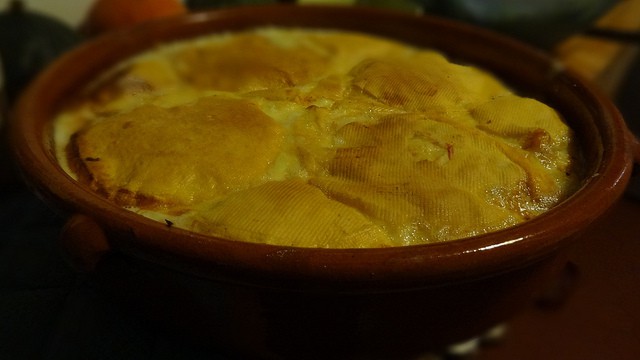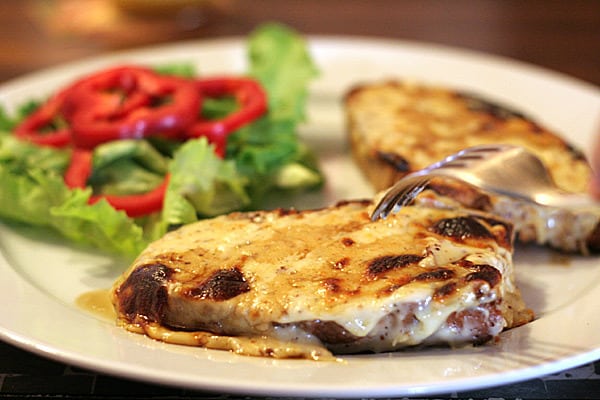As I perused the winter edition of Culture, a gorgeous shot of a plate of Raclette stopped me in my tracks on page 85. I read enchanting prose on Swiss Alpine cheese culture and the region’s renowned recipes. I basked in page after page of glorious images—molten cheese oozing onto plates of marble potatoes. Charcuterie and cornichons. Adorable little twin-tined forks. It was nearly too much. I started salivating. I reached for my shopping app, eager to compile the ingredients needed to reach my own cheesy catharsis.
Then, I stopped. What was I doing? I was so caught up in Raclette’s siren song that I wasn’t thinking straight. Yes, of course, Raclette is an amazing dish best served in the cold of winter. A pile of potatoes, cured meats, and little pickles drowning in a sea of gooey cheese is comfort food by definition. And, as the article rightfully pointed out, a single melted morsel of it is never enough. But…to run so blindly to Raclette is to neglect a whole bunch of other wintery cheese opportunities. Switzerland doesn’t hold the monopoly on the subject. I’m not suggesting Raclette isn’t a top-notch choice for winter cheese noshing. I’m just saying it’s not the only choice.
Here are three equally-satisfying cheese recipes not named Raclette to enjoy this winter.
Fondue
The grand dame of social cheese eating, fondue has at times been both the darling of the dining scene and the butt of jokes. Brought to global attention in the 1930’s by the Swiss, the concept of fondue as we know it today (named for the French verb fondré: “to melt”) dates back to the early 18th century. Once it hit the 1964 World’s Fair in New York, Americans couldn’t get enough of dipping stale bread and veggies into pots of molten cheese.
While fondue may not be quite the rage as it was in the 60s-70s, it certainly deserves serious consideration. There simply isn’t any winter dish better suited to a communal dining experience.
As for a recipe, I say go straight to the source. The team at Le Gruyère have a great collection of recipes. Make my fondue the Swiss classic moitié-moitié, “half-half”, a delightfully rich blend of Gruyère AOP and Vacherin Fribourgeois AOP. A little white wine, some kirsch (cherry brandy), a dash of cayenne…you can’t beat it. Go full old-school and chill up some kirsch for the midi-boire, a shot taken halfway through the meal to aid digestion and keep spirits high.
Welsh Rabbit
First things first. “Welsh Rabbit” is the original name first mentioned in early-18th century South Wales. The name “Welsh Rarebit” evolved some 50years later as a mistaken corruption of the original name. Whatever you call it, this combination of melted cheese, Worcestershire sauce, mustard, ale, and spices is just flat-out delicious.
Felicity Cloake at The Guardian wrote a fantastic recipe which considers the nuances and complexities of making Welsh Rabbit. From proper toasting techniques to adding wildcard ingredients, there’s a lot to think about. I wholly agree with her argument when she says, “If heaven isn’t melted cheese, I don’t know what is.”
Tartiflette
Off to the French Alps for this glorious dish. With recipes dating back as far as 1705, tartiflette has long been a regional staple and favorite meal. Tartiflette is thought to be named for the Savoyard word for potatoes, tartifles. A combination of potatoes, bacon, onion, heavy cream, wine, and broiled cheese, tartiflette is every bit as incredible as it sounds. As with most alpine recipes, simplicity is key. This recipe by Joel Robuchon by way of Genius Kitchen is straightforward, more than filling, and oh so delicious.

Photo Courtesy: Marlenedd/Flickr
Traditionally a tartiflette is made with Reblochon, a beautiful raw-milk cheese from the alpine region of Savoy. Sadly, this magnificent cheese can’t be imported into the United States because it is unpasteurized and not aged long enough to pass FDA muster. Not to worry, though. There are plenty of alternatives which work mighty fine in this recipe. Look for wintery Vacherin Mont d’Or from Switzerland, it’s domestic counterpart Winnimere from Vermont’s Jasper Hill Farm, or even Italian Taleggio in a pinch.





